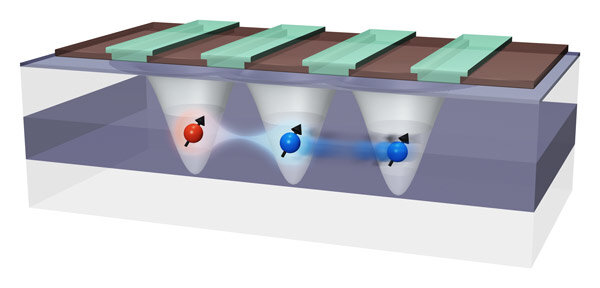Establishing Links Between Remote Silicon Qubits to Scale Quantum Computers
RIKEN physicists have achieved a breakthrough in connecting physically distant silicon spin qubits, a development that could potentially contribute to the scaling up of quantum computers. While major IT companies like IBM, Google, and Microsoft are already in the race to develop quantum computers, the challenge lies in scaling them up from a hundred or so qubits to millions of qubits.
Silicon quantum dots, with their small size and compatibility with existing fabrication technology, have emerged as a leading contender for large-scale quantum computing. However, connecting quantum dots that are far apart has proven to be a difficult task. Akito Noiri from the RIKEN Center for Emergent Matter Science explains that densely packing many qubits into a small area and connecting them with wires is a formidable challenge. Nevertheless, Noiri and his team have successfully achieved a two-qubit logic gate between physically distant silicon spin qubits.

Noiri states that despite the numerous approaches taken in this field, this is the first instance where a reliable logic gate formed by two distant qubits has been successfully demonstrated. This breakthrough paves the way for the potential expansion of quantum computing based on silicon quantum dots.
To establish a connection between the two qubits, the team employed a technique called coherent spin shuttling. This method enables the movement of single spin qubits across an array of quantum dots without compromising their phase coherence, a crucial characteristic for quantum computers as it carries vital information. The process involves the application of a voltage to push electrons through the array of qubits.
Although the physical distance between the two qubits was relatively short, Noiri expresses confidence in its extension in future research. He emphasizes the aim to increase the separation to approximately a micrometer or more, as this would enhance the practicality of the method for future applications.
This article is republished from PhysORG under a Creative Commons license. Read the original article.
Do not forget to share your opinion with us to provide you with the best posts !



0 Comments